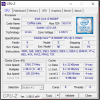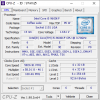- Mar 18, 2020
- 262
- 89
- 101
This super simple chiller uses a 5 gallon bucket, supercooled outside, then brought back inside once the water temp reaches 33*F. At that point I take my liquid to liquid 60 plate heat exchanger, which has a hot side and a cold side and easily contains well over 40x the surface area of a 360mm radiator, and leave the cold side open, so all the cold water immerses the hot side from all angles. I then use a small pwm pump to cycle cold water through the cold side of the heat exchanger. In other words, not only am I cooling the loop down, I am also using thee 5 gallon bucket to cool the heat exchanger itself. It takes almost 20*F off the loop, so I can bench for a good 30 minutes before the water in the bucket starts to warm. At that point, I just take the second bucket in and swap them out. Bam. Good to go. Also for kicks I "converted" a conventional 240mm radiator (since it was passive anyway) into liquid to liquid heat exchange by dropping the rad in the 5 gallon bucket as well. That alone took 5*F off the top immediately. So the delta T is 5-6*F with the converted radiator and 12-17*F through the 60 plate heat exchanger. With the two buckets, I can basically bench indefinitely at 5.4GHz
60 plate liquid to liquid heat exchanger (that's actually going to be used for a full liquid metal loop in the future)






60 plate liquid to liquid heat exchanger (that's actually going to be used for a full liquid metal loop in the future)

























